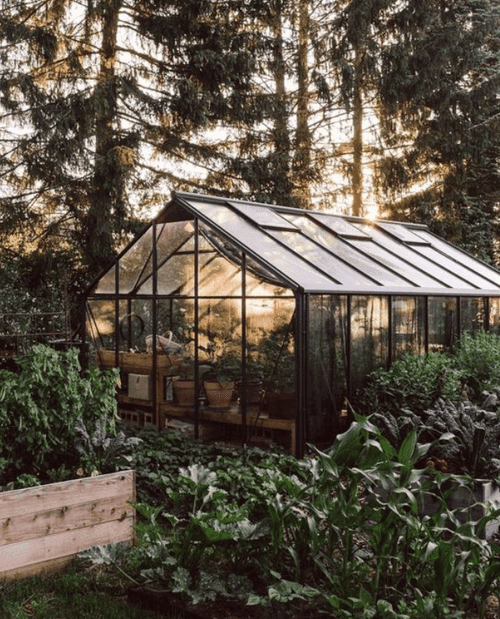Building Desires, Growing Environment-friendly: Monarch Greenhouse Builder Utah at Your Service
Wiki Article
Greenhouse Farming: Optimizing Plant Returns and Sustainability
With managed settings and reduced water usage, greenhouse farming uses the excellent solution for year-round production of fresh produce. Discover the advantages of greenhouse farming and begin gaining the benefits today!Advantages of Greenhouse Farming
Are you questioning what makes greenhouse farming so advantageous? One of the major benefits of greenhouse farming is the ability to manage the atmosphere in which plants are expanded.An additional advantage of greenhouse farming is the decrease in water use. Greenhouses are developed to be water-efficient, with systems that reuse and record water, reducing wastage. This is especially important in areas where water deficiency is an issue. By making use of water much more effectively, greenhouse farming aids to conserve this valuable source.
Additionally, greenhouse farming enables better bug and disease management. With the controlled atmosphere, it is easier to control the spread and avoid of insects and diseases. This reduces the need for damaging pesticides, making greenhouse-grown crops safer and extra eco pleasant.
Moreover, greenhouse farming supplies security against severe weather condition events. Crops expanded in greenhouses are secured from heavy rain, solid winds, and hailstorms, which can harm or ruin outdoor plants. Monarch Commercial Greenhouse Utah. This protection ensures an extra trustworthy and steady crop return, even during unforeseeable weather

Taking Full Advantage Of Crop Returns With Managed Environments
To maximize plant returns in greenhouse farming, you can accomplish optimum results by regulating the environment. By meticulously managing aspects such as temperature, humidity, light, and carbon dioxide levels, you can produce the excellent conditions for your crops to prosper. Among the key benefits of greenhouse farming is the capacity to regulate these environmental variables, allowing you to tailor them to the certain demands of each crop. As an example, you can readjust the temperature level to promote faster growth throughout the day and reduced it slightly in the evening to simulate all-natural variations. You can manage moisture levels to protect against conditions and make certain appropriate transpiration. By giving the appropriate quantity and high quality of light, you can expand the expanding period and increase returns. Furthermore, by controlling carbon dioxide levels, you can improve photosynthesis and motivate energetic growth. By applying these regulated settings, you can make the most of crop yields and achieve constant, top notch produce throughout the year.Encouraging Sustainability Through Greenhouse Farming
Take full advantage of sustainability in greenhouse farming by carrying out effective source monitoring strategies. Including lasting techniques in greenhouse style, such as utilizing energy-efficient materials and enhancing natural lighting, can better enhance sustainability. By adopting these resource management strategies, you can contribute to a more lasting future in greenhouse farming.Reducing Water Use in Greenhouse Farming
By applying effective water administration techniques, you can considerably reduce water usage in greenhouse farming. Water is a vital resource in farming, and saving it not only profits the setting however also aids to make best use of plant yields and success. One effective approach to minimize water usage is through making use of drip watering systems. These systems deliver water directly to the plant's origins, lessening evaporation and making certain that every decline is utilized efficiently. Furthermore, monitoring and regulating the moisture levels inside the greenhouse can avoid unneeded water loss. By utilizing sensors and automated systems, you can adjust the air flow and watering as necessary, maximizing water usage based upon the certain demands of your crops. Another approach is to catch and reuse rain. Collecting rain from the greenhouse roof and keeping it in containers allows you to supplement your watering needs without counting solely on freshwater resources. Implementing mulching techniques can assist preserve dirt moisture, decreasing the regularity of watering. Mulch work as a barrier, stopping water dissipation and maintaining the dirt cool and moist. By adopting these water-saving practices, you can reduce water waste, save sources, and develop a much more lasting future for greenhouse farming.Year-Round Manufacturing of Fresh Generate in Greenhouses
Greenhouses supply a regulated environment that permits you to grow crops regardless of the exterior climate problems. Greenhouses can be equipped with heating and cooling systems to preserve ideal temperature levels for various plants. By executing Monarch Greenhouse Sheds Utah these methods, you can maximize the productivity of your greenhouse and delight in a consistent supply of fresh create all year long.
Conclusion
In verdict, greenhouse farming offers various benefits for making the most of crop yields and advertising sustainability. Furthermore, greenhouse farming allows for decreased water usage, making it an eco friendly choice.One of the major benefits of greenhouse farming is the capacity to manage the environment in which crops are expanded.To make best use of plant yields in greenhouse farming, you can attain optimal results by regulating the environment. One of the essential benefits of greenhouse farming is the capacity to regulate these environmental factors, enabling you to customize them to the specific demands of each crop.By carrying out reliable water management methods, you can dramatically reduce water usage in greenhouse farming.In final thought, greenhouse farming supplies countless benefits for taking full advantage of plant returns and advertising sustainability.
Report this wiki page